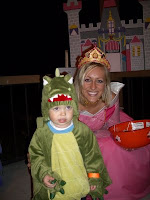This was a good article in the newsaper about food allergies.
By
Erin Richards of the Journal Sentinel
Posted: Nov. 2, 2008
One M&M, swallowed whole, and little Noelle's skin turned as red as a Cortland apple.
A month later, after eating soy ice cream, the 2-year-old turned colors again and started drooling, prompting her mother to inject a syringe full of epinephrine into the child's leg. Karen Tylicki of Mukwonago has no idea why her daughter's body treats certain foods as if they were poison. Tylicki, like parents of a growing number of food-allergic kids in Milwaukee and elsewhere around the country, is familiar with the fear, uncertainty, grief and sorrow that frequently accompany the condition.
Add hope to that list. Thanks to a La Crosse clinic that's gaining attention for its work desensitizing patients with food allergies, Noelle, now 6, can ingest almost 2 ounces of milk without a reaction.
The spike in the number of kids with food allergies - an 18% increase nationwide over the past decade, according to a newly released study from the U.S. Centers for Disease Control and Prevention - has prompted many schools and day-care facilities to develop new safety measures.
At the Children's Community Center, a day care facility in Menomonee Falls, director Nancy Larson said the jars of peanut butter that were once standard in every classroom have been removed because of the increase in peanut allergies.
"If someone forgot their lunch, we always used to give them peanut butter and crackers," Larson said. "Now we purchase soy butter."
In Waukesha Public Schools, District Nurse Twyla Lato said schools aren't "peanut-free" because that gives children a false sense of security. Nevertheless, the number of kids in the district with food allergies is startling: 545 students last year, compared with 481 in 2003-'04.
At Grafton Elementary School, Principal Jeff Martyka said that five years ago he didn't have any students "on epinephrine," the adrenaline-like drug that severely allergic children are supposed to carry with them at all times. Now he has seven.
Jamie Dempsey, 6, is one of them. Although he brings his lunch to school, his allergies to milk, eggs, peanuts and sesame are so severe that he eats on a sanitized lunch tray to avoid getting any of the offending substances on his skin. In the classroom, Dempsey and his classmates have hand sanitizers on their desks.
"It's hard - trying to strike a balance between providing awareness and not provoking anxiety in people or coming across as a high-maintenance mom," said Monica Dempsey, Jamie's mother.
Food, emotions linked Food and emotions are so intrinsically linked that dealing with the pitfalls of food allergies can seem like a disability at times, parents say.
Tara Williams, of the village of Belgium in Ozaukee County, said her family went through a period of mourning when her then 11-month-old son, Brett, was diagnosed with allergies to eggs, dairy, peanuts, tree nuts, sunflower and coconut.
"You start thinking of all the kid things you envisioned doing as they grew up - going out for pizza, ice cream on a hot summer night, even just having them leave your eyesight without worrying," Williams said. "You go through anger and sadness. Everything will be fine for a while, and then he'll have a reaction out of the blue, and you're all upset about it again."
Theories abound about why more children are suddenly allergic to more foods. Michael Zacharisen, a physician in the Allergy/Asthma/Immunology Clinic at Children's Hospital of Wisconsin in Wauwatosa, said none of them - the "we're too sanitized" theory, the "antibiotics leaching in the gut theory," for example - has been proved.
"Food allergy has lagged a bit behind other research because it doesn't have pharmaceutical funding," Zacharisen said.
Research on potential treatments is more promising. At Duke University, subjects in a study are being given tiny amounts of liquid or powder peanut protein to see if they can build up a tolerance over time.
Allergy Associates of La Crosse has also championed the practice. The clinic sees more than 10,000 patients a year who come for "sublingual immunotherapy" - or the placing of tiny drops of the allergen under the tongue to stimulate the oral mucosa. According to the clinic, 43 states are using the La Crosse method to treat patients with food and other allergies. Mary Morris, the clinic's lead allergist, said the goal is to minimize the effects of an accidental exposure.
Patient Noelle Tylicki, who started kindergarten this year in Genesee Depot, will increase her dosage of milk one last time in January. She has completed the desensitizing program for eggs.
"I have to give her wings at some point," her mother said. "She has to be able to fly by herself."








































